Difference between revisions of "Horsehide - Horse leather"
| (23 intermediate revisions by one user not shown) | |||
| Line 9: | Line 9: | ||
| − | == | + | ==Horsehide - Horse leather== |
| − | + | Horse leather has a long tradition and has been used since prehistoric times. The processing of horse hides into [[leather]] probably began with the nomadic cultures of Central Asia several thousand years ago. People recognized the value of horse hides because of their [[Measures and weights|size]] and [[leather quality|quality]]. Horse leather was used for high quality products such as fine [[Leather clothing|clothing]], [[leather shoes|shoes]] and [[Leather accessories|accessories]]. | |
| + | |||
| + | The techniques and [[tanning leather|tanning processes]] for horse leather and [[cowhide]] are different. The processing of horse skins required a demanding treatment due to the finer structure. The tanning of horse leather therefore required specialized knowledge. | ||
| + | |||
| + | In terms of trade, horse leather was and is often more expensive and considered a luxury item. Horses were rarer than cattle, and horse skins were prized for their quality and potential uses in high-end products. Cowhide leather, on the other hand, was widely available and more economically accessible due to the greater availability of cattle and the wide range of uses. | ||
| + | |||
| + | Horse leathers are rare today. Because horses in the fields were replaced by tractors and as a means of transport by motorized vehicles, there is not as much horse leather in the slaughterhouses. Although horsemeat has fallen into disrepute because it appeared in foods undeclared, horsemeat is basically a normal foodstuff if correctly declared, but is consumed by only a few people on a regular basis. | ||
<p align=center> | <p align=center> | ||
| − | [[bild: | + | [[bild:Horse-meat-Japan.jpg|500px]] |
| − | + | ||
</p> | </p> | ||
<p align=center> | <p align=center> | ||
| − | '' | + | ''Horse meat in Japan.''<br></p> |
<p> </p> | <p> </p> | ||
| + | <p align=center> | ||
| + | [[bild:Pferdefleisch-Sandwich.jpg|500px]] | ||
| + | </p> | ||
| + | <p align=center> | ||
| + | ''Horse meat sandwich in Sicily (Italy).''<br></p> | ||
| + | <p> </p> | ||
| + | |||
| + | <p align=center> | ||
| + | [[bild:Pferdefleisch-Kloepse-01.jpg|500px]] | ||
| + | </p> | ||
| + | <p align=center> | ||
| + | ''Horse meat balls in Fulda (Germany).''<br></p> | ||
| + | <p> </p> | ||
| + | |||
| + | <p align=center> | ||
| + | [[bild:Horse meat 01.jpg|500px]] | ||
| + | </p> | ||
| + | <p align=center> | ||
| + | ''Horse butcher with horsemeat and horse sausage at the market in Tregastel, Brittany, France.''<br></p> | ||
| + | <p> </p> | ||
| − | + | Horse leather is traditionally used for [[leather shoes|shoes]] and [[leather clothing|clothing]] and is a [[smooth leather]]. | |
| Line 33: | Line 58: | ||
</p> | </p> | ||
<p align=center> | <p align=center> | ||
| − | '' | + | ''Horse [[aniline leather]] often has a special [[Leather grain - Grain side|pattern due to the skin structure]] ([http://www.leder-fiedler.de/ www.leder-fiedler.de]).''<br></p> |
<p> </p> | <p> </p> | ||
<p align=center> | <p align=center> | ||
| − | [[bild:Pferdeleder-04.jpg| | + | [[bild:Pferdeleder-04.jpg|500px]] |
| − | + | ||
</p> | </p> | ||
<p align=center> | <p align=center> | ||
| − | ''[[ | + | [[bild:Pferdeleder-05.jpg|500px]] |
| + | </p> | ||
| + | <p align=center> | ||
| + | ''[[finish|Pigmented]] horse leather is hardly distinguishable from [[Cow leather|bovine leather]].''<br></p> | ||
<p> </p> | <p> </p> | ||
<p align=center> | <p align=center> | ||
| − | [[bild:Pferd-03.jpg| | + | [[bild:Pferd-03.jpg|500px]] |
| − | [[bild:Pferd-04.jpg| | + | </p> |
| + | <p align=center> | ||
| + | [[bild:Pferd-04.jpg|500px]] | ||
</p> | </p> | ||
<p align=center> | <p align=center> | ||
| − | '' | + | ''There are horses all over the world.''<br></p> |
<p> </p> | <p> </p> | ||
| − | == Cordovan - | + | == Cordovan - Horse leather [[leather shoes|shoes]] == |
| − | + | Cordovan leather is mainly used for high-end [[leather shoes|shoes]]. Only the leather from the rear flanks of heavy workhorses is suitable. A few millimetres below the surface of the [[Hide - Skin|skin]], there are two round pieces, which have a highly-compressed fibre structure (butt or shell). The leather is particularly dense and [[leather quality|resistant]] in this area. Ready-produced cordovan contains a lot of [[Oils & fats in the leather industry|grease]] and is therefore [[Waterproofing leather|water repellent]]. | |
| − | + | These pieces are about as big as a sheet of paper. Cordovan is one of the very expensive leathers, especially as the demand clearly exceeds the supply. Suitable horse skins are very rare, since heavy workhorses are also very rare and cannot be replaced by horses from breeding or sporting activities. The raw material therefore comes from a few specialist manufacturing companies. An American market leader in Cordovan production gets 75 percent of its skins from France and 25 percent from the Canadian province of Québec. | |
<p align=center> | <p align=center> | ||
| − | [[bild:Pferdeleder-01.jpg| | + | [[bild:Pferdeleder-01.jpg|500px]] |
| − | + | ||
</p> | </p> | ||
<p align=center> | <p align=center> | ||
| − | ''[[ | + | [[bild:Schuh-Cordovan-Jacob-01.jpg|500px]] |
| + | </p> | ||
| + | <p align=center> | ||
| + | ''[[Leather shoes|Shoes]] made of Cordovan (right from [[Leather shoes#Bespoke shoes|shoe maker]] [https://jacobf-schuhe.com/ Jacob, F. Shoes])''<br></p> | ||
<p> </p> | <p> </p> | ||
| − | Cordovan | + | Cordovan leather has its roots in the United States, where its [[leather production|manufacturing process]] has been perfected over the years, while shoes made of this leather have been less frequent in Europe. Men's shoes made of Cordovan are therefore produced especially by American [[Leather shoes#Bespoke shoes|shoemakers]]. |
| − | + | Due to the [[Vegetable-tanned leather|vegetable tanning]] and the other production steps, the production time of Cordovan leather takes about six months. During the [[Tanning leather|tanning process]] it becomes clearly visible which skin pieces can ultimately be used for [[leather shoes|shoe]] production and which are more suitable for [[Leather wallets|wallets]] or [[leather belt|leather belts]]. The skins are dried on glass for four days after 60 days of tanning and then wiped by hand with a special oil. This oil is completely absorbed into the leather during the next 90 days of storage. | |
| − | + | A special feature of Cordovan leather is its fine [[Gloss of leather|gloss]]. This is produced by [[Glazing leather|glazing]] at the end of the production process. Friction and heat create the characteristic effect which, however, can be destroyed by the use of incorrect [[shoe care]] products. Therefore, care for Cordovan shoes very carefully and only use the products recommended by the shoe or leather producer. Shoes from Cordovan have a very long life span if the production quality was good and if they are [[Basic rules when dealing with leather#Basic rules when dealing with leather shoes|treated well]]. | |
| − | + | The density of these Cordovan pieces and how the processing has been perfected is shown by the fact that the [[flesh side|meat side]] is processed outwards. Nevertheless, the leather is very smooth and shiny at the end. There is no noticeable roughness. Only under the microscope can you see that the back of the leather is the visible surface, but the leather is stretchy and comfortable. | |
<p align=center> | <p align=center> | ||
| − | [[bild:Cordovan-2014-07-03.jpg| | + | [[bild:Cordovan-2014-07-03.jpg|500px]] |
| − | + | ||
</p> | </p> | ||
<p align=center> | <p align=center> | ||
| − | '' | + | [[bild:Cordovan-Fleischseite.jpg|500px]] |
| + | </p> | ||
| + | <p align=center> | ||
| + | ''The gloss of the Cordovan leather reveals itself under the microscope as the back ([[flesh side]]) of the leather.''<br></p> | ||
<p> </p> | <p> </p> | ||
| − | + | There are several theories about the origin of the term Cordovan. One of them is that it is derived from a French [[tanner]] family, which specialised in horse [[leather production|leather processing]] in a village of the same name. Other sources report that the Spanish city of Córdoba had already been a centre of [[leather production]] at the time of the Moors and that the village gradually became a generic name for [[Goatskin|goat leather]] and then for horse leather. In Germany, the term "Korduan" is used occasionally. The term Cordovan is common in English and Spanish. | |
<p align=center> | <p align=center> | ||
| − | <flashow> | + | <flashow>//www.youtube.com/v/He7EpbyzfPE&fs=1&color1=0x660000&color2=0x550000&border=1|width=500|height=281,25</flashow> |
</p> | </p> | ||
<p align=center> | <p align=center> | ||
| − | '' | + | ''A very nice [[Leather videos|video]] about the Cordovan leather production in the USA.'' |
</p> | </p> | ||
| − | + | There are also [[leather shoes]] with normal [[smooth leather|smooth]] horse leather with [[Leather grain - Grain side|grain side]] to the top. Under the microscope, the prominent [[Leather hair pores - Hair follicles|pore structure]] of horse leather can be observed. | |
<p align=center> | <p align=center> | ||
| − | [[bild: | + | [[bild:Horse leather 01.jpg|253px]] |
| + | [[bild:Horse leather 02.jpg|247px]] | ||
</p> | </p> | ||
<p align=center> | <p align=center> | ||
| − | '' | + | [[bild:Cow leather hair pores 01.jpg|500px]] |
| + | </p> | ||
| + | <p align=center> | ||
| + | ''Horse leather has a different [[Leather hair pores - Hair follicles|pore structure]] than [[Cow leather]] (below cow leather).''<br></p> | ||
<p> </p> | <p> </p> | ||
| + | <p align=center> | ||
| + | [[bild:Shoe horseskin-01.jpg|500px]] | ||
| + | </p> | ||
| + | <p align=center> | ||
| + | [[bild:Shoe horseskin-02.jpg|500px]] | ||
| + | </p> | ||
| + | <p align=center> | ||
| + | ''Horse leather shoes with [[Leather grain - Grain side|grain side]] to the top.''<br></p> | ||
| + | <p> </p> | ||
| − | == | + | ==Bags made of Cordovan horse leather== |
| − | + | [[leather bag|Briefcases]] are also made of Cordovan. | |
<p align=center> | <p align=center> | ||
| − | [[bild:Tasche-Pferdeleder-01.jpg| | + | [[bild:Tasche-Pferdeleder-01.jpg|500px]] |
| − | [[bild:Tasche-Pferdeleder-02.jpg| | + | </p> |
| + | <p align=center> | ||
| + | [[bild:Tasche-Pferdeleder-02.jpg|500px]] | ||
</p> | </p> | ||
<p align=center> | <p align=center> | ||
| − | '' | + | ''Briefcase made of horse leather from [http://horween.com/ Horween - Shell Cordovan since 1905].''<br></p> |
<p> </p> | <p> </p> | ||
| − | == | + | ==How to care for Cordovan horse leather== |
| − | + | Even if Cordovan is particularly [[leather quality|robust]], there are important rules for [[leather cleaner|cleaning]] and [[leather care|care]], which apply only to this kind of leather. | |
| − | ''' | + | '''Important:''' Cordovan cannot be cleaned with moisture. Wet cleaning makes the [[Glazing leather|glazed]] fibres swell and they immediately become very dull and rough. Therefore, only dust off with a dry and soft brush or cloth! For stubborn stains, only use products that are approved for Cordovan or consult a specialist in caring for high-quality shoes. |
| − | + | ||
| − | + | ||
<p align=center> | <p align=center> | ||
| − | [[bild: | + | [[bild:Cordovan-water-marks-01.jpg|500px]] |
</p> | </p> | ||
<p align=center> | <p align=center> | ||
| − | '' | + | ''Moisture damage on cordovan leather.''<br></p> |
<p> </p> | <p> </p> | ||
| − | + | A classic [[leather care]] can also lead to the same result. Therefore, only products approved for Cordovan may be used. Cordovan can be maintained with [https://www.lederzentrum.de/colourlock-glanz-milch-1-liter.html COLOURLOCK GLOSS MILK]. It retains the shine and protects against drying. Moisten a soft cloth with a little GLOSS MILK and apply it in circular movements without heavy rubbing. Then let dry on its own away from sources of heat. The resulting dullness is re-polished with a soft cloth. It is important to work sparingly and with little force. Always test first in a hidden area if possible. | |
| − | + | ||
| − | ==[[ | + | ==[[Leather jacket|Leather jackets]] made of horse leather== |
| − | + | In addition to the use for [[leather shoes|shoes]], horse leather is also processed into [[Leather jacket|jackets]]. Since there is not much horse leather on the market, not many jackets are produced. Horse leather jackets have special characteristics: they are usually [[Leather weight - Lightweight Leather|heavier]] and [[Haptic evaluation of leather surfaces|stiffer]] than other leather clothing and are heavily [[Oils & fats in the leather industry|oiled or greased]] during the [[leather production|production]] of the leather. The surface of the leather jackets is smooth and without a notable [[Natural leather grain|grain structure]]. The design of the jackets is mostly in the style of early aviation jackets. Lovers of these leather jackets appreciate precisely these qualities. The leather becomes softer over time with use and gets a characteristic [[Antique Leather - Vintage Leather#Leather patina|patina]]. Sometimes worn horse leather jackets get higher prices than new horse leather jackets. | |
| Line 144: | Line 189: | ||
</p> | </p> | ||
<p align=center> | <p align=center> | ||
| − | '' | + | ''Typical horse leather jackets.''<br></p> |
<p> </p> | <p> </p> | ||
<p align=center> | <p align=center> | ||
| − | [[bild:Pferdeleder-Jacke-01.jpg| | + | [[bild:Pferdeleder-Jacke-01.jpg|500px]] |
| − | + | ||
</p> | </p> | ||
<p align=center> | <p align=center> | ||
| − | '' | + | [[bild:Pferdeleder-Jacke-03.jpg|500px]] |
| + | </p> | ||
| + | <p align=center> | ||
| + | ''Horse leather jackets are usually stiff and intensively [[Pull up leather - Greased leather - Waxed leather - Oiled leather|oiled]].''<br></p> | ||
<p> </p> | <p> </p> | ||
| − | + | But there are also very [[Haptic evaluation of leather surfaces|soft]] horse leather jackets. The company [http://www.heinzbauer.com/index.php?clang=&nr= www.heinzbauer.com] produces horse leather jackets where the leather is softened by a special washing process. | |
| − | + | ||
| Line 163: | Line 209: | ||
</p> | </p> | ||
<p align=center> | <p align=center> | ||
| − | '' | + | ''Soft horse leather jackets from [http://www.heinzbauer.com/index.php?clang=&nr= www.heinzbauer.com].''<br></p> |
<p> </p> | <p> </p> | ||
| − | ==[[ | + | ==[[Leather furniture]] made of horsehide == |
| − | + | Furniture made of horse leather is rare. The area of the mane has been stylishly integrated into this furniture as a distinctive identification mark. | |
| − | + | ||
<p align=center> | <p align=center> | ||
| − | [[bild: | + | [[bild:Furniture horse hide 01.jpg|250px]] |
| − | [[bild: | + | [[bild:Furniture horse hide 02.jpg|250px]] |
</p> | </p> | ||
<p align=center> | <p align=center> | ||
| − | ''[[ | + | ''Horse [[leather furniture]] with recognisable area of the mane (seen at [http://www.leder-fiedler.de/ www.leder-fiedler.de]).''<br></p> |
<p> </p> | <p> </p> | ||
| + | ==[[leather bag|leather bags]] made of horsehide == | ||
| − | + | [[leather bag|Bags]] made of horse leather are a particular rarity. | |
| + | |||
| + | <p align=center> | ||
| + | [[bild:Horse Leather Leather Bag.jpg|500px]] | ||
| + | </p> | ||
| + | <p align=center> | ||
| + | [[bild:Horse-hide-Leder-Fiedler-leather-dealer.jpg|500px]] | ||
| + | </p> | ||
| + | <p align=center> | ||
| + | ''Horse [[leather bag]] as a beautiful natural product (seen at [http://www.leder-fiedler.de/ www.leder-fiedler.de]).''<br></p> | ||
| + | <p> </p> | ||
== [[Leather videos|Video]] about [[Exotic leather|leather of different animal species]]== | == [[Leather videos|Video]] about [[Exotic leather|leather of different animal species]]== | ||
| − | |||
<p align=center> | <p align=center> | ||
| − | <flashow> | + | <flashow>//www.youtube.com/v/-tJtZmJCWLw&fs=1&color1=0x660000&color2=0x550000&border=1|width=500|height=281,25</flashow> |
</p> | </p> | ||
<p align=center> | <p align=center> | ||
| − | ''[[Exotic leather|Leather of different animal species - Exotic leather]]'' | + | ''[[Exotic leather|Leather of different animal species - Exotic leather]].'' |
</p> | </p> | ||
Latest revision as of 19:45, 7 June 2023
Contents
- 1 Horsehide - Horse leather
- 2 Cordovan - Horse leather shoes
- 3 Bags made of Cordovan horse leather
- 4 How to care for Cordovan horse leather
- 5 Leather jackets made of horse leather
- 6 Leather furniture made of horsehide
- 7 leather bags made of horsehide
- 8 Video about leather of different animal species
- 9 Other exotic leather
Horsehide - Horse leather
Horse leather has a long tradition and has been used since prehistoric times. The processing of horse hides into leather probably began with the nomadic cultures of Central Asia several thousand years ago. People recognized the value of horse hides because of their size and quality. Horse leather was used for high quality products such as fine clothing, shoes and accessories.
The techniques and tanning processes for horse leather and cowhide are different. The processing of horse skins required a demanding treatment due to the finer structure. The tanning of horse leather therefore required specialized knowledge.
In terms of trade, horse leather was and is often more expensive and considered a luxury item. Horses were rarer than cattle, and horse skins were prized for their quality and potential uses in high-end products. Cowhide leather, on the other hand, was widely available and more economically accessible due to the greater availability of cattle and the wide range of uses.
Horse leathers are rare today. Because horses in the fields were replaced by tractors and as a means of transport by motorized vehicles, there is not as much horse leather in the slaughterhouses. Although horsemeat has fallen into disrepute because it appeared in foods undeclared, horsemeat is basically a normal foodstuff if correctly declared, but is consumed by only a few people on a regular basis.
Horse meat in Japan.
Horse meat sandwich in Sicily (Italy).
Horse meat balls in Fulda (Germany).
Horse butcher with horsemeat and horse sausage at the market in Tregastel, Brittany, France.
Horse leather is traditionally used for shoes and clothing and is a smooth leather.
Horse aniline leather often has a special pattern due to the skin structure (www.leder-fiedler.de).
Pigmented horse leather is hardly distinguishable from bovine leather.
There are horses all over the world.
Cordovan - Horse leather shoes
Cordovan leather is mainly used for high-end shoes. Only the leather from the rear flanks of heavy workhorses is suitable. A few millimetres below the surface of the skin, there are two round pieces, which have a highly-compressed fibre structure (butt or shell). The leather is particularly dense and resistant in this area. Ready-produced cordovan contains a lot of grease and is therefore water repellent.
These pieces are about as big as a sheet of paper. Cordovan is one of the very expensive leathers, especially as the demand clearly exceeds the supply. Suitable horse skins are very rare, since heavy workhorses are also very rare and cannot be replaced by horses from breeding or sporting activities. The raw material therefore comes from a few specialist manufacturing companies. An American market leader in Cordovan production gets 75 percent of its skins from France and 25 percent from the Canadian province of Québec.
Shoes made of Cordovan (right from shoe maker Jacob, F. Shoes)
Cordovan leather has its roots in the United States, where its manufacturing process has been perfected over the years, while shoes made of this leather have been less frequent in Europe. Men's shoes made of Cordovan are therefore produced especially by American shoemakers.
Due to the vegetable tanning and the other production steps, the production time of Cordovan leather takes about six months. During the tanning process it becomes clearly visible which skin pieces can ultimately be used for shoe production and which are more suitable for wallets or leather belts. The skins are dried on glass for four days after 60 days of tanning and then wiped by hand with a special oil. This oil is completely absorbed into the leather during the next 90 days of storage.
A special feature of Cordovan leather is its fine gloss. This is produced by glazing at the end of the production process. Friction and heat create the characteristic effect which, however, can be destroyed by the use of incorrect shoe care products. Therefore, care for Cordovan shoes very carefully and only use the products recommended by the shoe or leather producer. Shoes from Cordovan have a very long life span if the production quality was good and if they are treated well.
The density of these Cordovan pieces and how the processing has been perfected is shown by the fact that the meat side is processed outwards. Nevertheless, the leather is very smooth and shiny at the end. There is no noticeable roughness. Only under the microscope can you see that the back of the leather is the visible surface, but the leather is stretchy and comfortable.
The gloss of the Cordovan leather reveals itself under the microscope as the back (flesh side) of the leather.
There are several theories about the origin of the term Cordovan. One of them is that it is derived from a French tanner family, which specialised in horse leather processing in a village of the same name. Other sources report that the Spanish city of Córdoba had already been a centre of leather production at the time of the Moors and that the village gradually became a generic name for goat leather and then for horse leather. In Germany, the term "Korduan" is used occasionally. The term Cordovan is common in English and Spanish.
A very nice video about the Cordovan leather production in the USA.
There are also leather shoes with normal smooth horse leather with grain side to the top. Under the microscope, the prominent pore structure of horse leather can be observed.
Horse leather has a different pore structure than Cow leather (below cow leather).
Horse leather shoes with grain side to the top.
Bags made of Cordovan horse leather
Briefcases are also made of Cordovan.
Briefcase made of horse leather from Horween - Shell Cordovan since 1905.
How to care for Cordovan horse leather
Even if Cordovan is particularly robust, there are important rules for cleaning and care, which apply only to this kind of leather.
Important: Cordovan cannot be cleaned with moisture. Wet cleaning makes the glazed fibres swell and they immediately become very dull and rough. Therefore, only dust off with a dry and soft brush or cloth! For stubborn stains, only use products that are approved for Cordovan or consult a specialist in caring for high-quality shoes.
Moisture damage on cordovan leather.
A classic leather care can also lead to the same result. Therefore, only products approved for Cordovan may be used. Cordovan can be maintained with COLOURLOCK GLOSS MILK. It retains the shine and protects against drying. Moisten a soft cloth with a little GLOSS MILK and apply it in circular movements without heavy rubbing. Then let dry on its own away from sources of heat. The resulting dullness is re-polished with a soft cloth. It is important to work sparingly and with little force. Always test first in a hidden area if possible.
Leather jackets made of horse leather
In addition to the use for shoes, horse leather is also processed into jackets. Since there is not much horse leather on the market, not many jackets are produced. Horse leather jackets have special characteristics: they are usually heavier and stiffer than other leather clothing and are heavily oiled or greased during the production of the leather. The surface of the leather jackets is smooth and without a notable grain structure. The design of the jackets is mostly in the style of early aviation jackets. Lovers of these leather jackets appreciate precisely these qualities. The leather becomes softer over time with use and gets a characteristic patina. Sometimes worn horse leather jackets get higher prices than new horse leather jackets.
Typical horse leather jackets.
Horse leather jackets are usually stiff and intensively oiled.
But there are also very soft horse leather jackets. The company www.heinzbauer.com produces horse leather jackets where the leather is softened by a special washing process.
Soft horse leather jackets from www.heinzbauer.com.
Leather furniture made of horsehide
Furniture made of horse leather is rare. The area of the mane has been stylishly integrated into this furniture as a distinctive identification mark.
Horse leather furniture with recognisable area of the mane (seen at www.leder-fiedler.de).
leather bags made of horsehide
Bags made of horse leather are a particular rarity.
Horse leather bag as a beautiful natural product (seen at www.leder-fiedler.de).
Video about leather of different animal species
Leather of different animal species - Exotic leather.
Other exotic leather
- Alligator leather
- Alpaca fur
- Antelope leather
- Armadillo leather
- Bird leather
- Bull testicles
- Caiman leather
- Camel leather
- Carpincho leather
- Cat fur
- Chicken leather
- Crocodile leather
- Dog leather
- Donkey leather
- Elephant leather
- Fish leather: Eel, shark, salmon, moray eel, stingray and many others
- Frog leather - Toad leather
- Giraffe leather
- Hippo Leather
- Kangaroo leather
- Llama Fur
- Lizard leather
- Ostrich leather
- Pangolin leather
- Peccary leather
- Rumen leather
- Sealskin leather
- Snakeskin
- Turtle skin
- Walrus leather
- Yak leather
- Zebra hide







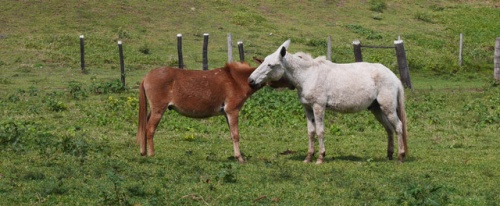
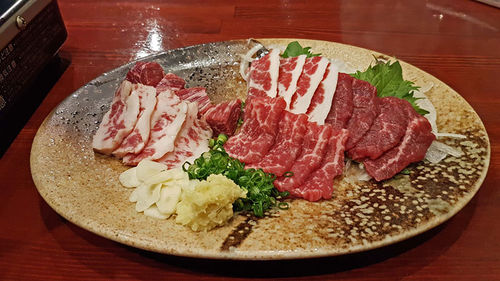
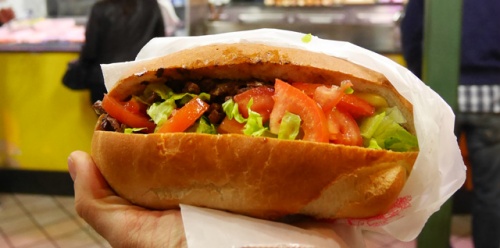
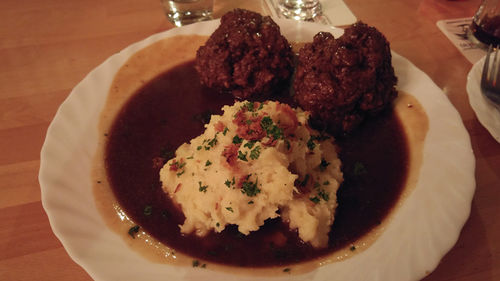
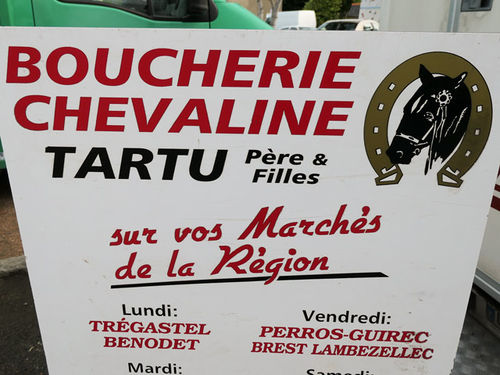
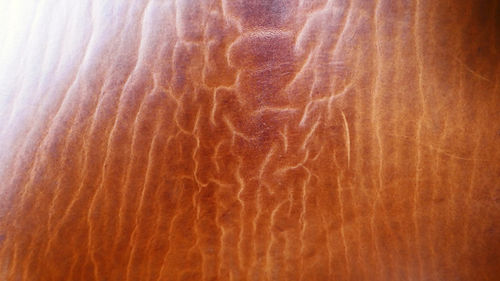
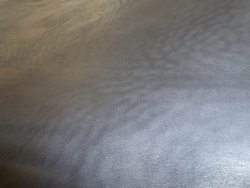
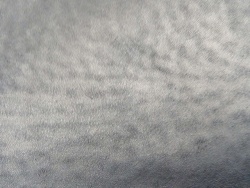
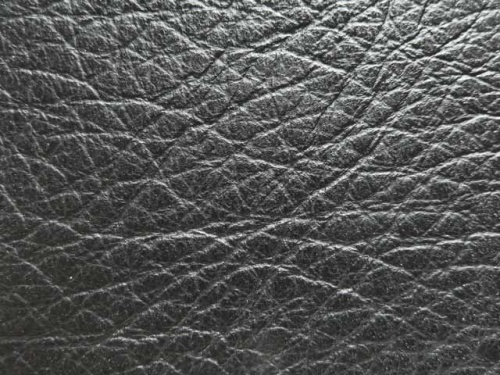
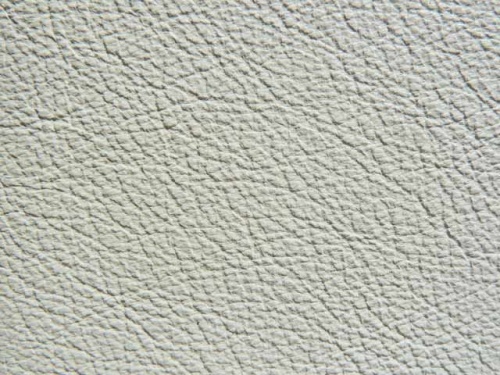
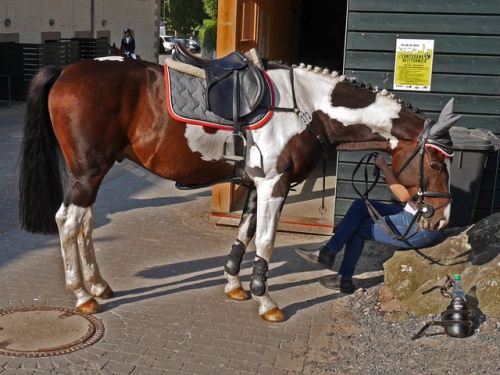
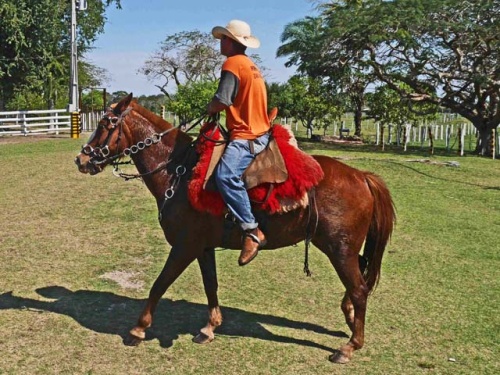
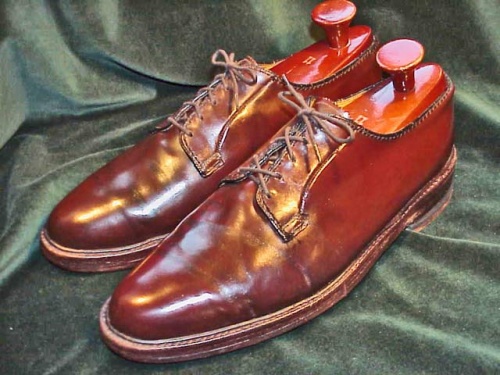
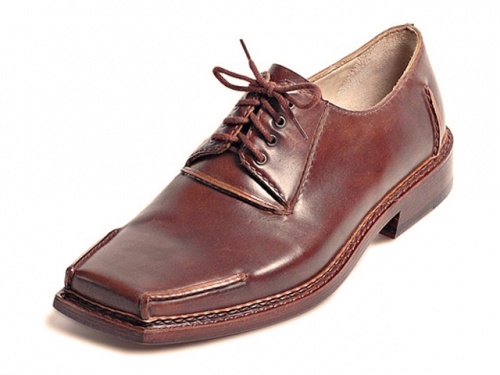
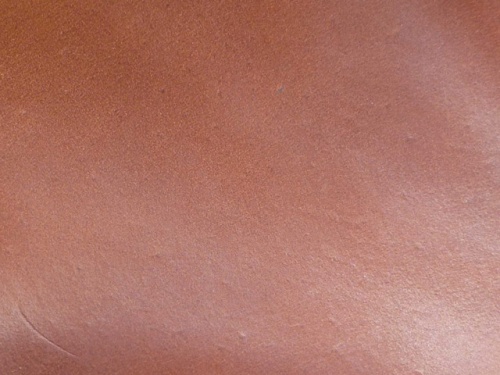
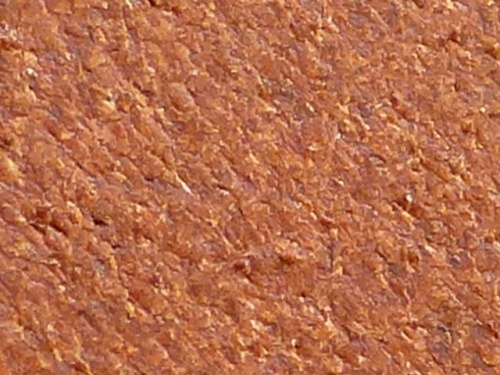
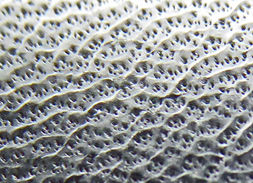
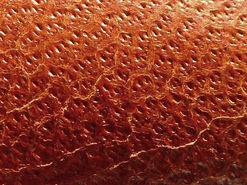
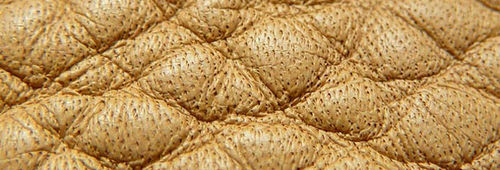
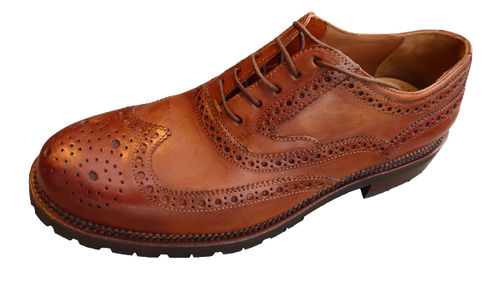
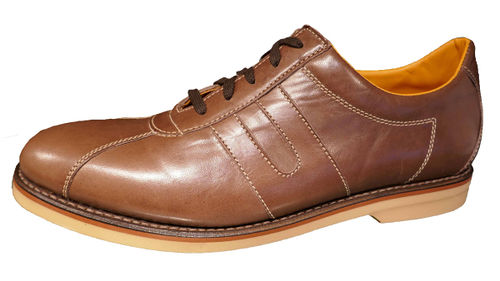
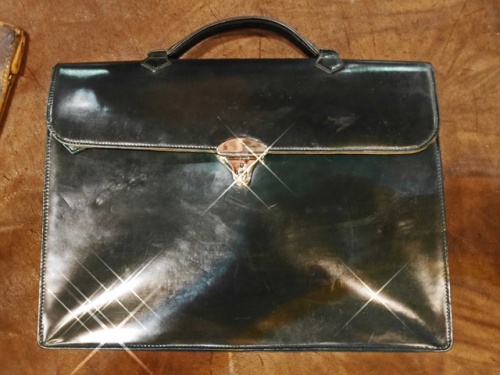
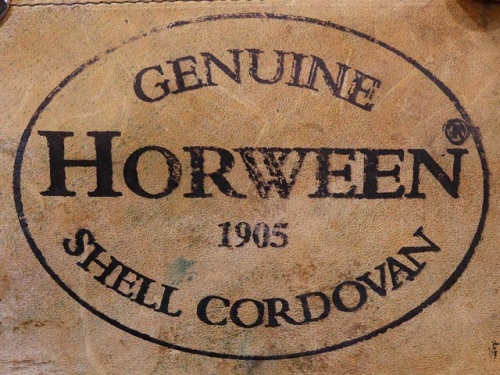
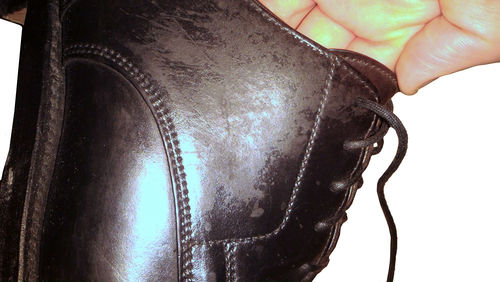
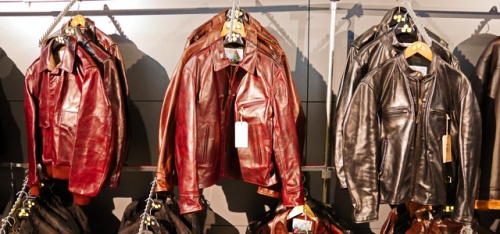
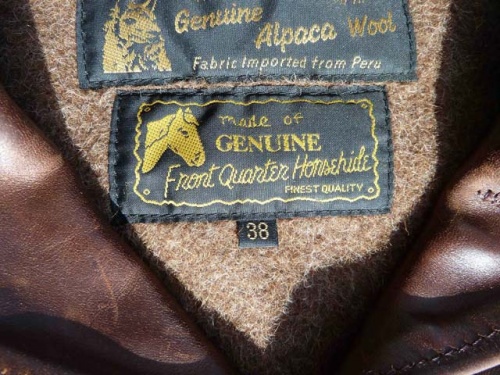
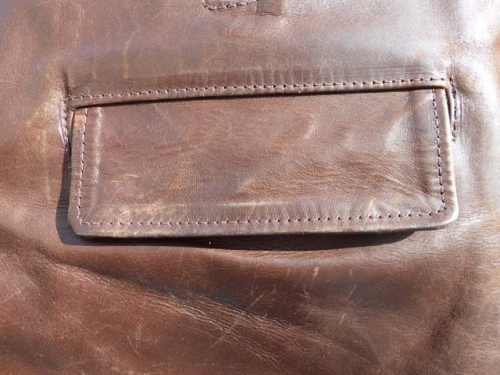
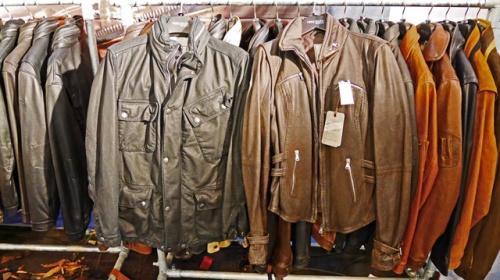
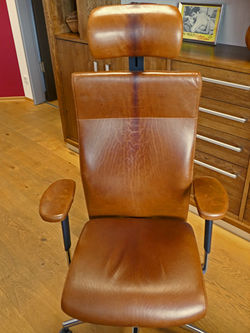
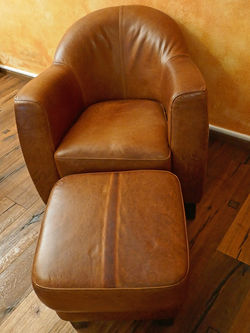
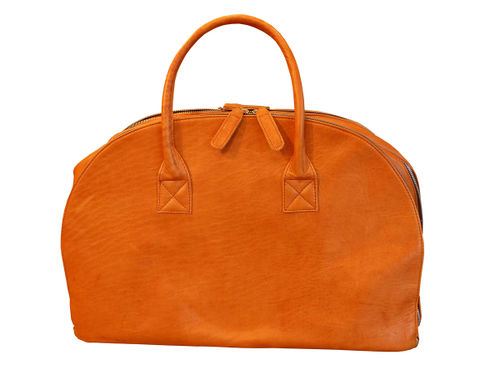
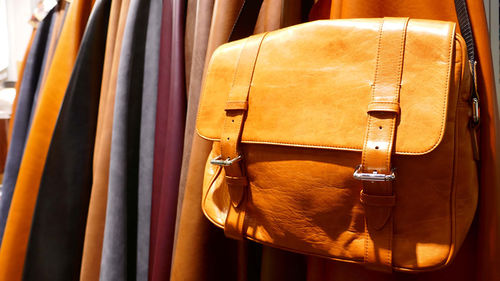

 a kotori web solution
a kotori web solution